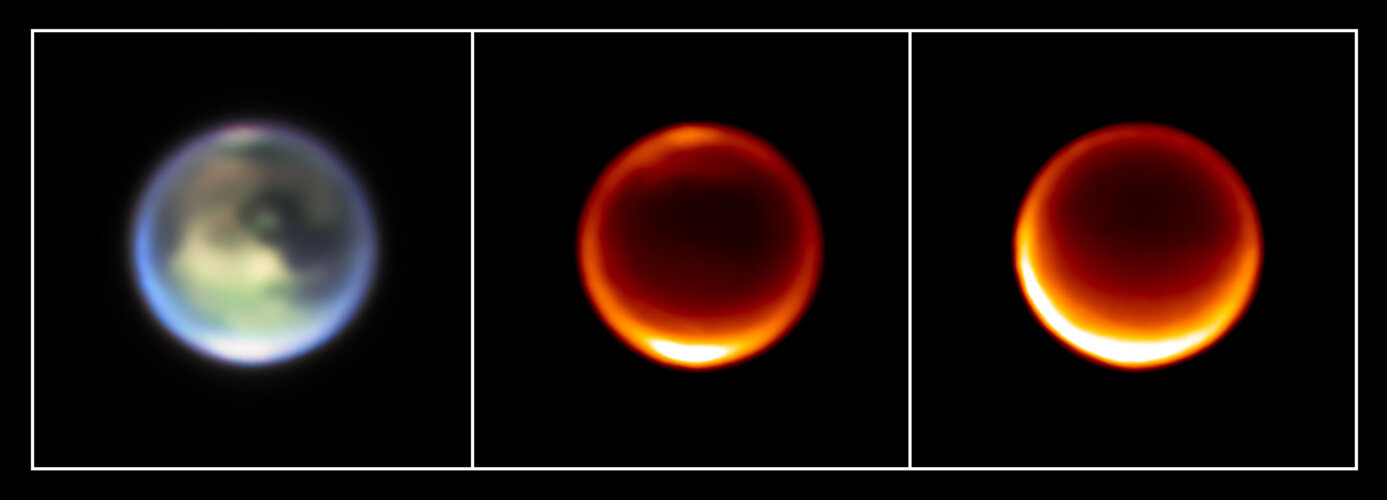
Saturn’s moon Titan is an intriguing world cloaked in a yellowish, smoggy haze. Similar to Earth, the atmosphere is mostly nitrogen and has weather, including clouds and rain. Unlike Earth, whose weather is driven by evaporating and condensing water, frigid Titan has a methane (CH4) cycle. It evaporates from the surface and rises into the atmosphere, where it condenses to form methane clouds. Occasionally it falls as a chilly, oily rain onto a solid surface where water ice is hard as rocks.
“Titan is the only other place in our Solar System that has weather like Earth, in the sense that it has clouds and rainfall onto a surface,” explained lead author Conor Nixon of NASA's Goddard Space Flight Center in Greenbelt, Maryland.
The team observed Titan in November 2022 and July 2023 using both Webb and one of the twin ground-based W.M. Keck telescopes. Those observations not only showed clouds in the mid and high northern latitudes on Titan – the hemisphere where it is currently summer – but also showed those clouds apparently rising to higher altitudes over time. While previous studies have observed cloud convection at southern latitudes, this is the first time evidence for such convection has been seen in the north. This is significant because most of Titan’s lakes and seas are located in its northern hemisphere and evaporation from lakes is a major potential methane source.
On Earth the lowest layer of the atmosphere, or troposphere, extends up to an altitude of about 12 kilometers. However, on Titan, whose lower gravity allows the atmospheric layers to expand, the troposphere extends up to about 45 kilometers. Webb and Keck used different infrared filters to probe to different depths in Titan’s atmosphere, allowing astronomers to estimate the altitudes of the clouds. The science team observed clouds that appeared to move to higher altitudes over a period of days, although they were not able to directly see any precipitation occurring.
“Webb’s observations were taken at the end of Titan’s northern summer, which is a season that we were unable to observe with the Cassini-Huygens mission,” said Thomas Cornet of the European Space Agency, a co-author of the study. “Together with ground-based observations, Webb is giving us precious new insights into Titan’s atmosphere, that we hope to be able to investigate much closer-up in the future with a possible ESA mission to visit the Saturn system.”



